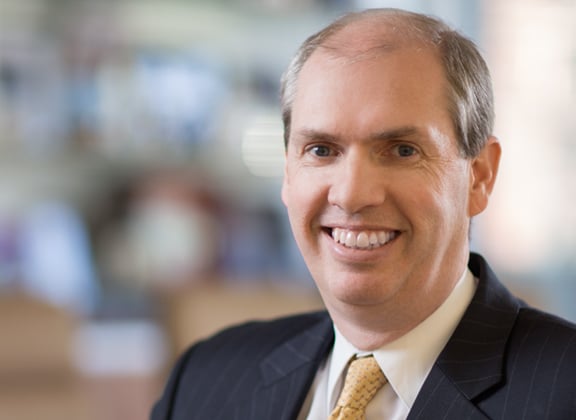“You have to be resilient and gritty in your pursuit of [safety]. It’s every event, every day, with people committed to understanding what happened and a commitment to make sure it doesn’t happen again,” said Dr. Richard Shannon, Executive Vice President of Health Affairs at the University of Virginia Health System, in his keynote address at the 2017 Bay Area Performance Improvement Network Executive Summit.
Value Capture Principal, Geoff Webster, published this article in the Shingo Institute Blog, describing the key role Dr. Shannon's principle-based leadership plays in UVA's achieving lower mortality, higher patient throughput, reduced waste, better supply management, safer patients and staff, as well as UVA’s best financial year ever (2016).
Learn more about the Shingo Principles.
Full Article:
It’s hard work,” Dr. Richard Shannon, Executive Vice President of Health Affairs at the University of Virginia Health System, recently told the audience of healthcare leaders and performance improvement professionals at the Bay Area Performance Improvement Network (BAPIN) executive summit in Oakland, California. “You have to be resilient and gritty in your pursuit of [safety]. It’s every event, every day, with people committed to understanding what happened and a commitment to make sure it doesn’t happen again.”
Dr. Shannon has long personified the advice he shared with the BAPIN audience, demonstrating a keen interest, as well as documented success, in building a culture of excellence, learning and improvement in leadership roles at UVA, The University of Pennsylvania Health System, and Allegheny General Hospital. Gritty resilience and unwavering commitment to the cause of safety have yielded significant results at UVA, including lower mortality, higher patient throughput, reduced waste, better supply management, safer patients and staff, as well as UVA’s best financial year ever (2016).
What has been key to achieving, and more importantly, sustaining the ever-better safety and financial outcomes at UVA Health System? It should come as no surprise – UVA’s foundation and work are deeply rooted in principles.
At AGH, Penn, and UVA, the most fundamental of the Shingo Principles – Respect Every Individual – served as the driving force for the hard work of improvement. In healthcare particularly, this principle manifests in many ways, and runs clearly through each Shingo dimension to deliver value to the customer. For a hospital, customer value equates to a safe and positive health outcome for the patient. As shown in the chart further below, UVA’s results are a very bright line from the bottom to the top of the Shingo pyramid.
After assuming his role at UVA four years ago, Dr. Shannon built upon the lessons he’d gained in his years at AGH and Penn. At that time, as he describes it, the structure and systems of UVA did not leave much room for learning, especially at the executive level. For example, the Health System dutifully reported reams of information to various agencies, but did not have the time, capabilities or processes to evaluate, much less act on or develop strategy based on, that information. Despite the goal of being the best, UVA did not have a systematic process of getting there in a meaningful way.
UVA went to its customers in the region to ask what they wanted, and the community responded. People wanted to know, if I enter your hospital as a patient: (i) what are my chances of surviving; (ii) what is the complications rate; and, (iii) when can I get back to work?
Respecting the voice of their customers, UVA went to work, systematically learning how to become a learning institution. Value Capture was there to help, and like all Shingo affiliates, a fundamental part of our mission was to transfer capability, so that those professionals at UVA could sustain and, better yet, continually improve upon their delivery of value to customers.
It has been more than two years since UVA began to work independently of Value Capture. Learning and improvements have grown and spread across the Health System, to patients and staff, as the fundamental Shingo principle of Respect Every Individual is creating a culture of excellence. How do we know this? Here are some clinical outcomes and their related financial impacts:
| 62% reduction in hospital-acquired infections (central line and urinary tract) | $2.6 million |
|
109 fewer pediatric infections |
$4.2 million |
| 53 fewer sepsis deaths
|
$1.83 million |
| 22% reduction in patient falls | $83,000 |
| 17% reduction in pressure ulcers
|
$1.6 million |
| 95% reduction in stock-outs | $3.2 million in supplies and
29,000 hours (saved nurses this time searching for missing/out-of-stock supplies) |
| DART rate (OSHA measure of employee injury) cut in half | “Priceless” in Dr. Shannon’s words |
The University of Virginia Health System obviously has made significant improvements in health delivery and financial results in the past four years. This is of itself an impressive achievement. Yet, one may wonder if, in these times of serious industry challenges, a sustained future of learning, improvement and excellence awaits UVA.
This comment from Dr. Shannon holds the answer:
“Everything I showed you today is about 15% of the opportunity. You say, ‘Look at all those results.’ I think it’s about 15% of what we’re capable of, I’m serious. This is only 15%. But we’re getting better at it, we’re able to take on more stuff. It takes time, but if you think about the magnitude of the opportunity, it’s significant.”
A culture of learning and excellence is not static – an excellent enterprise is never content. Leaders dedicated to continually raising the capabilities of their people and the level of performance are gritty and resilient in their pursuit of always-better, and thus the principles-driven organization is the one that succeeds, improves, and sustains success.
View Dr. Shannon’s complete address via YouTube.

Written by Geoff Webster
Mr. Webster is a co-founding principal of Value Capture. He leads Value Capture's advisory business. Full Bio

Submit a comment